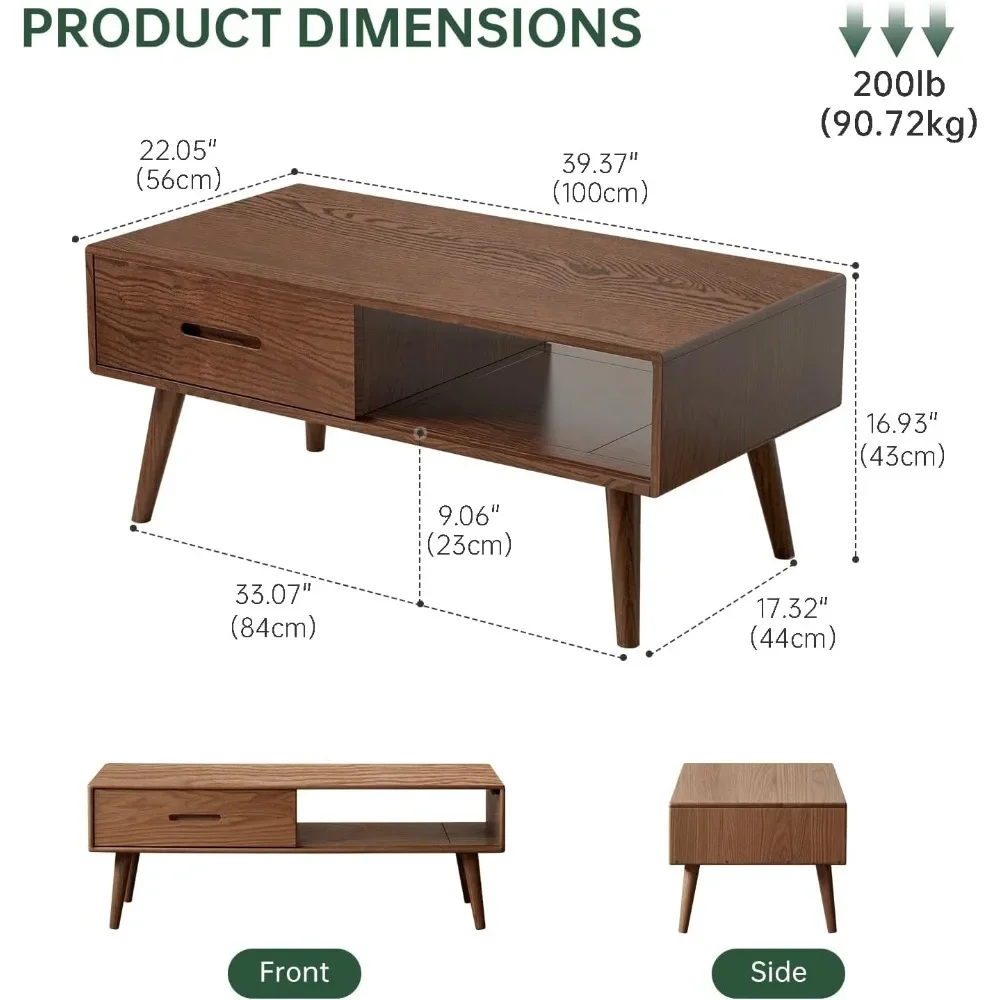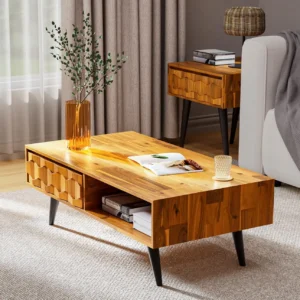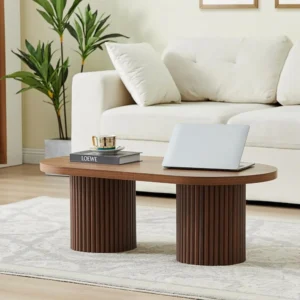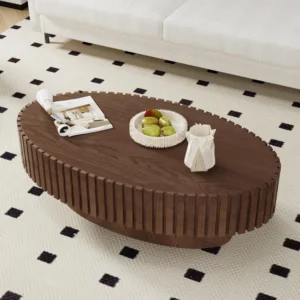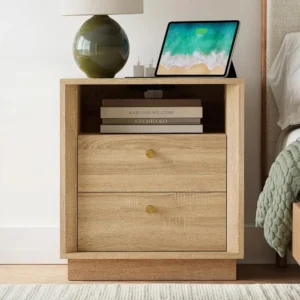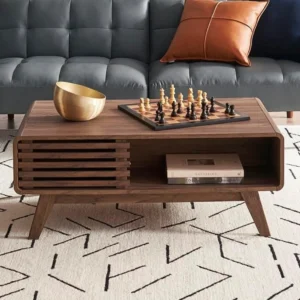1. Introduction: Understanding Teak’s Unique Grain Characteristics
Wood grain is the natural pattern formed by wood fibers as a tree grows. For teak wood, these patterns are particularly special and valuable in furniture design. The distinct grain of teak isn’t just beautiful—it tells a story of the tree’s growth and provides a blueprint for how the wood will perform structurally in furniture.
Teak has earned its reputation as one of the world’s premier furniture woods not only for its legendary durability but also for its remarkable grain characteristics. The warm, golden-brown hues and smooth, straight patterns make teak instantly recognizable to furniture enthusiasts. These grain patterns significantly impact both the visual appeal of a piece and its structural integrity.
In this guide, we’ll explore how thoughtful creators can work with teak’s natural grain to create furniture that’s both beautiful and enduring. From understanding basic grain properties to mastering advanced techniques that showcase teak’s natural beauty, this knowledge forms the foundation of exceptional furniture design—principles that align perfectly with the timeless intelligent black mid-century coffee tables that have become design classics.
2. Teak Grain Characteristics: Nature’s Blueprint for Design
Teak’s grain pattern is as distinctive as a fingerprint, offering furniture designers a natural canvas with which to work. Understanding these characteristics is essential for anyone working with this remarkable wood.
Teak typically features:
- Straight grain patterns that occasionally display wavy or interlocked characteristics
- Natural oils that create a lustrous sheen and contribute to its water resistance
- Medium to coarse texture with a somewhat uneven grain structure
- Distinctive growth rings that create visual interest and depth
- Occasional mineral streaks that add character and uniqueness
The relationship between teak’s natural oils and its grain is particularly important. These oils aren’t just responsible for teak’s legendary water resistance—they also enhance the visual depth of the grain, creating a warm glow that seems to radiate from within the wood.
Growth conditions significantly influence teak grain variation. Old-growth teak tends to display tighter, more consistent grain patterns due to slower growth, while plantation-grown teak often shows wider, more varied grain due to faster growth cycles. These variations aren’t defects but rather character features that skilled designers can leverage.
When exploring options for furniture that showcases beautiful wood grain, many design enthusiasts turn to collections like mid-century modern teak coffee tables where these natural characteristics become central design elements rather than afterthoughts.
3. How Cutting Methods Transform Teak Grain Expression
The way teak is cut from the log dramatically transforms how its grain appears in the finished furniture. Each cutting method creates a distinctly different visual effect and impacts the wood’s stability characteristics.
Flat-sawn (Plain-sawn) Teak:
– Creates cathedral-like patterns with dramatic, wavy grain
– Yields the most visually dynamic surfaces
– More susceptible to seasonal movement
– Ideal for decorative panels and tabletops where visual impact is desired
Quarter-sawn Teak:
– Produces straight, linear grain patterns with distinctive ray flecks
– Offers excellent stability with minimal seasonal movement
– Provides consistent appearance across the surface
– Perfect for table legs, chair components, and areas requiring maximum stability
Rift-sawn Teak:
– Creates the most uniform, straight grain appearance
– Minimizes figure and ray flecks for a clean, consistent look
– Excellent stability characteristics similar to quarter-sawn
– Ideal for modern, minimalist designs where uniformity is desired
When designing furniture pieces like a black mid-century coffee table design, understanding these cutting methods allows designers to make informed choices about which components should showcase dramatic grain and which should maintain structural integrity.
The ability to identify authentic teak grain is also crucial for furniture creators and buyers alike. The genuine article displays a characteristic golden-brown color with darker brown streaks, a somewhat oily feel, and a distinctive, slightly sweet aroma when freshly cut.
4. Aesthetic Design Principles: Showcasing Teak’s Natural Beauty
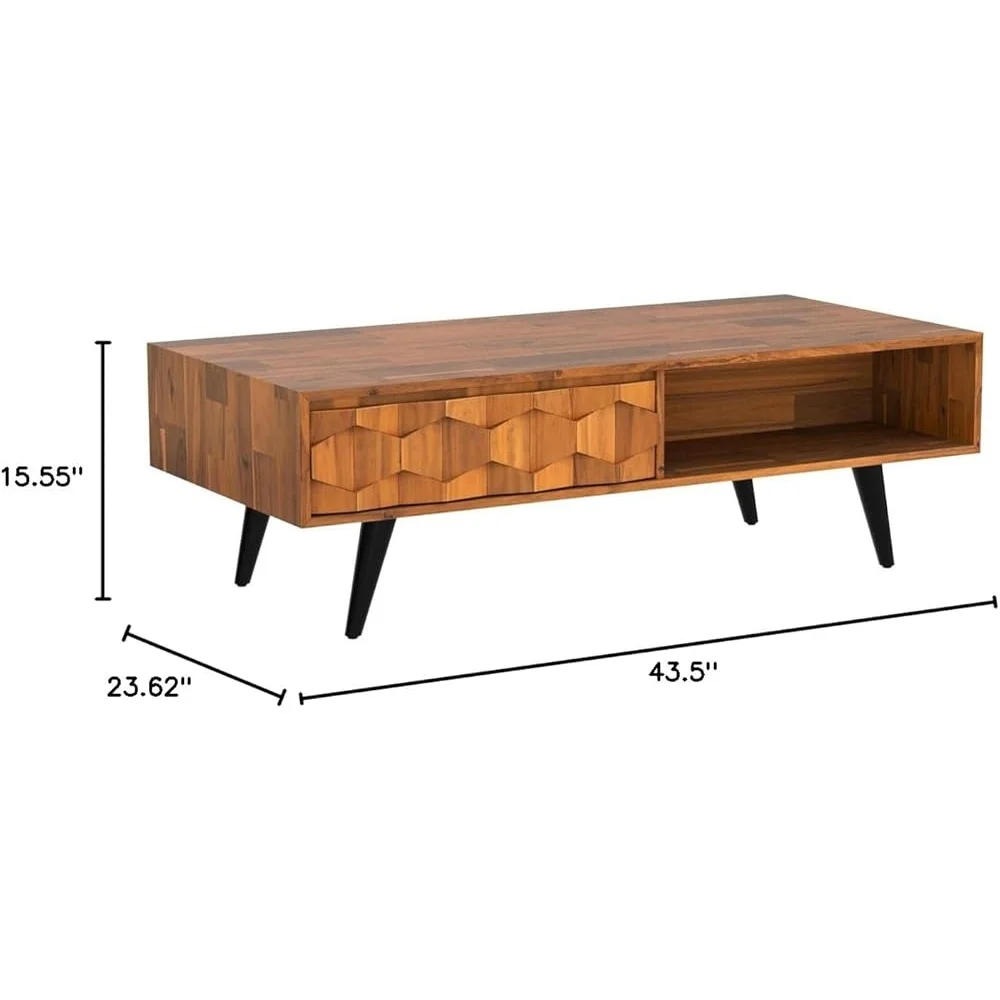
When designing with teak, thoughtful grain direction can transform an ordinary piece into an extraordinary one. Strategic placement and orientation of grain patterns create visual harmony and flow that draws the eye across the entire piece.
Grain Direction Strategies:
– Vertical grain orientation creates a sense of height and formality
– Horizontal grain patterns suggest width, stability, and relaxed elegance
– Diagonal or angled grain can create dynamic visual energy
Matching techniques are particularly important when working with wider surfaces like tabletops:
Bookmatching involves placing two boards side by side, mirroring their grain patterns like an open book. This creates symmetrical patterns that add formal elegance to a piece.
Slip matching arranges boards with their grain running in parallel, creating a continuous, flowing effect across the surface.
End matching carefully aligns end grain patterns for a cohesive look in tabletops and wide panels.
The best teak furniture designs maintain a careful balance between showcasing prominent grain and maintaining overall design simplicity. When the grain is particularly dramatic, simpler forms often work best, allowing the natural beauty of the wood to be the focal point.
Mid-century modern design principles embrace this philosophy perfectly, which is why mid-century modern solid wood coffee tables continue to be prized for their timeless appeal. They celebrate teak’s natural beauty while maintaining clean lines and functional simplicity.
5. Structural Considerations: Aligning Grain for Strength and Stability
Beyond aesthetics, grain direction significantly impacts the structural performance of teak furniture. Understanding how to align grain for maximum strength ensures pieces that will endure for generations.
Grain Direction for Key Components:
- Tabletops: Arrange boards with grain running along the length for maximum stability and minimized warping. Account for seasonal movement across the width.
- Table Legs: Use vertical grain orientation for maximum compression strength and resistance to splitting.
- Aprons and Rails: Align grain horizontally along the length to maximize tensile strength.
- Drawer Components: Front panels should have horizontal grain for stability, while sides benefit from vertical grain to prevent sagging.
Seasonal wood movement occurs primarily across the grain (width) rather than along it (length). Properly designed furniture accounts for this movement through appropriate joinery and construction techniques that allow the wood to expand and contract naturally with humidity changes.
Common issues like warping, cupping, and twisting can often be traced back to improper grain orientation. By understanding and working with teak’s natural properties rather than against them, designers can create pieces with the structural integrity found in quality features black mid-century coffee tables that have stood the test of time.
6. Joinery Techniques Optimized for Teak Grain
Selecting the right joinery methods that complement teak’s grain properties is essential for creating furniture that will remain stable and beautiful for decades.
Mortise and Tenon Joints work beautifully with teak, particularly when the grain in the tenon runs parallel to the tenon’s length for maximum strength. These classic joints are ideal for connecting legs to aprons and other frame components.
Dovetail Joints should be oriented so that the grain in both pieces runs perpendicular to the joint line. This creates maximum resistance against pulling apart—perfect for drawer construction.
Splined Miter Joints provide both strength and decorative potential. The spline grain should run perpendicular to the joint line for maximum reinforcement.
Dowel and Floating Tenon Joints offer excellent strength when the dowel grain runs perpendicular to the joint line. These are particularly useful for teak because they minimize end grain exposure.
End grain is particularly important to consider when working with teak. It absorbs more finish, shows color differently, and is more susceptible to moisture changes than face grain. Minimizing exposed end grain through proper joinery improves both appearance and durability.
Many iconic teak tables enduring allure can be attributed to their masterful joinery that both strengthens the piece and becomes part of its visual character.
7. Material Selection: Choosing the Right Teak for Your Design

Selecting the right teak boards for your project begins with understanding how to “read” the grain for both beauty and potential issues.
When examining teak boards, look for:
– Consistent color throughout the board (extreme variations may indicate stress or disease)
– Straight, parallel grain for structural components
– Absence of excessive knots in high-stress areas
– Minimal reaction wood (abnormal growth caused by environmental stress)
– Appropriate moisture content (8-12% for interior furniture)
Teak is available in various grades, with higher grades offering more consistent grain and fewer natural “defects.” However, creative designers often embrace character features as design elements rather than flaws.
When sourcing teak for larger projects, consider purchasing from a single log when possible, as this ensures greater consistency in grain pattern and color. If using multiple boards for wide surfaces, sort them carefully to create visually pleasing transitions between pieces.
For smaller accent pieces like mid-century modern solid wood side end tables, even a single carefully chosen board with exceptional grain can make a dramatic statement. These smaller pieces also provide excellent opportunities to showcase particularly interesting grain patterns that might be overwhelming on larger surfaces.
Sustainable sourcing is increasingly important for conscientious furniture creators. Look for certification from organizations like the Forest Stewardship Council (FSC) to ensure your teak comes from responsibly managed forests.
8. Working with Teak: Machining and Shaping Considerations
Teak’s unique properties require specific approaches when cutting, shaping, and finishing. Understanding these characteristics helps achieve better results with less frustration.
Cutting and Machining Tips:
– Use sharp, carbide-tipped tools to minimize tear-out
– Cut and rout against the grain direction when possible
– Reduce cutting speed by 10-15% compared to other hardwoods
– Pre-drill holes to prevent splitting, especially near edges
– Allow slightly dulled cutting edges for smoother surfaces (teak’s natural oils can cause burnishing with extremely sharp tools)
Teak contains silica, a naturally occurring mineral that quickly dulls tool edges. Plan for more frequent sharpening when working extensively with teak, and consider dedicated tools for teak projects if possible.
Sanding requires special attention to enhance rather than obscure the grain beauty:
– Begin with coarser grits (80-100) and progress gradually
– Sand with the grain whenever possible
– Consider stopping at a medium grit (180-220) to maintain some texture
– Wipe surfaces with mineral spirits between grits to raise and identify residual scratches
Working with figured or irregular grain patterns requires extra care. Reducing the cutting depth, using backing boards, and employing specialized tools like scraping planes can help manage challenging grain without tear-out.
For guidance on finishing approaches that complement your machining work, exploring articles on best table finishes teak grain can provide valuable insights for your specific project.
9. Finishing Techniques to Enhance Teak Grain

The right finish can dramatically enhance teak’s natural beauty, highlighting its grain patterns while providing appropriate protection.
Oil Finishes:
– Penetrate deep into the wood fibers
– Enhance grain depth and color
– Easy to apply and repair
– Require more frequent maintenance
– Examples: teak oil, Danish oil, tung oil
Film Finishes:
– Create a protective layer on the surface
– Provide greater protection against moisture and wear
– Require more careful application
– Examples: polyurethane, lacquer, varnish
Natural Patination:
– Allows teak to naturally develop silver-gray color over time
– Requires minimal maintenance beyond occasional cleaning
– Emphasizes grain texture through weathering
– Popular for outdoor applications or rustic aesthetics
The sheen level of your chosen finish dramatically affects how grain appears. Higher gloss finishes enhance depth and color but highlight imperfections, while matte finishes create a more natural, subtle appearance that disguises minor flaws.
Surface preparation significantly impacts the final appearance. For maximum grain definition:
– Sand thoroughly through progressive grits
– Consider grain raising with water between final sandings
– Remove all dust before applying finishes
– Test finishes on scrap pieces cut from the same board
While exploring different wood species and their finishing characteristics, you might find interesting comparisons in collections like mid-century modern walnut coffee tables, which require somewhat different finishing approaches than teak due to their unique properties.
Mid-Century Modern Solid Wood Coffee Tables, Mid-Century Modern Teak Coffee Tables
$879.95 Select options This product has multiple variants. The options may be chosen on the product pageMid-Century Modern Danish Coffee Tables, Mid-Century Modern Oval Coffee Tables, Mid-Century Modern Solid Wood Coffee Tables
$390.05 Select options This product has multiple variants. The options may be chosen on the product pageMid-Century Modern Oval Coffee Tables, Mid-Century Modern Solid Wood Coffee Tables
$679.56 Select options This product has multiple variants. The options may be chosen on the product pageMid-Century Modern Solid Wood Side & End Tables, Mid-Century Modern Vintage Side & End Tables
Price range: $347.99 through $376.99 Select options This product has multiple variants. The options may be chosen on the product pageMid-Century Modern Solid Wood Coffee Tables, Mid-Century Modern Walnut Coffee Tables
$501.53 Select options This product has multiple variants. The options may be chosen on the product pageMid-Century Modern Small Side & End Tables, Mid-Century Modern Solid Wood Side & End Tables
$221.85 Select options This product has multiple variants. The options may be chosen on the product page
10. Special Techniques: Advanced Methods for Showcasing Teak Grain
Beyond basic finishing approaches, several advanced techniques can dramatically highlight teak’s natural grain patterns and create truly distinctive furniture pieces.
Wire brushing involves using a stiff wire brush to remove softer early wood while leaving the harder late wood intact. This creates a textured surface that emphasizes the grain pattern both visually and tactilely. The technique works particularly well on quarter-sawn teak where the grain runs consistently.
Cerusing (sometimes called liming) involves applying a light-colored pigment that lodges in the open grain, creating dramatic contrast between the grain lines and the surrounding wood. This technique works beautifully with teak’s naturally pronounced grain structure.
Contrasting inlays can frame and enhance teak’s natural beauty. Materials like ebony, maple, brass, or even colored resins create striking visual interest when juxtaposed against teak’s warm tones.
Rather than avoiding grain irregularities, skilled designers often highlight them as unique features. Knots, burls, and unusual grain patterns can become focal points through careful placement and highlighting techniques.
For inspiration on showcasing teak’s timeless appeal through special techniques, exploring collections featuring unveiling timeless elegance teak coffee tables can provide valuable design ideas that balance innovation with respect for the material’s natural characteristics.
11. Common Issues and Solutions When Designing with Teak Grain
Even experienced woodworkers encounter challenges when working with teak grain. Here are solutions to some common issues:
Problem: Unexpected wood movement causing joints to loosen or panels to crack
Solution: Always design with wood movement in mind. Use floating panels in frames, allow for expansion with appropriate joinery, and avoid restricting movement with rigid fastening methods.
Problem: Significant color variation between boards disrupting visual harmony
Solution: Pre-sort boards before construction, group similar colors together, or consider light sanding and selective application of tinted finish to blend differences subtly.
Problem: Difficulty working with interlocked grain sections
Solution: Reduce cutting angles, take lighter passes, use extremely sharp tools, and consider scraping instead of planing for final surfacing.
Problem: Checking or splitting, particularly at ends of boards
Solution: Seal end grain immediately after cutting, avoid exposing teak to rapid humidity changes, and consider designing with shorter components when possible.
Problem: Finish appears blotchy or uneven due to teak’s natural oils
Solution: Wipe surfaces with acetone before finishing to remove surface oils, or choose finishes specifically formulated for oily woods.
When addressing design challenges with teak furniture, considering how professional designers approach similar issues in pieces like those featured in guides for styling black mid-century coffee table can provide valuable insights applicable to your own projects.
12. Case Studies: Exemplary Teak Grain Implementation in Mid-Century Design
The mid-century modern period represents a golden age for teak furniture design, with master craftspeople creating pieces that perfectly showcased the wood’s natural beauty while maintaining functional simplicity.
The Danish “Papa Bear” chair designed by Hans Wegner demonstrates masterful teak grain implementation. The frame components feature vertically oriented grain for strength, while the arms display horizontal grain that naturally follows their curved form. This attention to grain direction creates visual harmony while ensuring structural integrity.
Finn Juhl’s iconic “Egyptian” table showcases how strategic grain orientation can enhance design elements. The tabletop’s bookmatched grain creates mirror-image symmetry that draws the eye to the center, while the legs feature vertical grain for maximum strength.
Contemporary furniture makers continue to innovate with teak while respecting these traditional principles. Modern designs often combine teak with metal, glass, or contrasting woods, but still maintain careful attention to grain direction and pattern.
Key lessons from these master designers include:
– Allowing the grain to guide the design rather than forcing the material into predetermined forms
– Creating harmony between functional requirements and grain characteristics
– Understanding when to showcase dramatic grain as a focal point and when to use subtler grain for supporting elements
For those interested in exploring exemplary teak furniture from this influential period, collections of mid-century modern Danish coffee tables offer excellent examples of these design principles in action.
Through thoughtful consideration of teak’s unique grain properties—from material selection to finishing techniques—today’s furniture creators can produce pieces that honor this remarkable wood’s natural beauty while creating functional art that will endure for generations.

